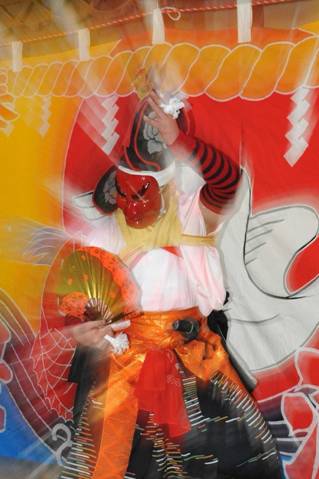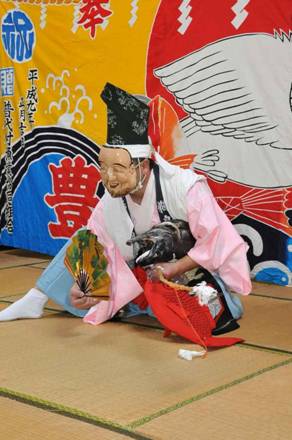
| Pseudonym reading | Uno Torikara |
|---|---|
| Specified type | Country designation |
| Type | Intangible folk cultural property |
| Designated date | March 2, 2015 |
| Specified details | |
| quantity | |
| location | Shimoharui-gun Fushiro-mura Kototori Shrine |
| owner | |
| Holding group | Koi Bird Kagura Preservation Society |
| Management organization | |
| home page |
Overview
鵜 神 can be classified as に 神, which is widely distributed in the Tohoku region. Yuzu Kagura is a prayer that devilish and burnt down with a lion head that symbolizes the god, and it is considered that the Gongen dance performed in the rooster Kagura is a good example. In addition, Kotobuka Kagura shows the typical so-called Yamabushi Kagura played by the Shudoists, that is, Yamabushi.
It is called Kitajima (to Kuji City) and Minamitoki (to Kamaishi City), and it has been traveling around the villages on the Sanriku coast for about two months, in a yearly alternation with Kuromori Kagura in Miyako City. Kitajima travels eight places in the "Putyo, Noda and Kuji districts" in total, while south pole travels in the 14 locations "Putyo, Iwasen, Miyako, Yamada, Oiso, Kamaishi district" in total.
We will go around each district from the beginning of the January 8 dance until the April dance is made. In the daytime, they carry houses with the gods and pray for the safety of the house by the gods dance. At night, they dance private houses and public halls as Kagura lodgings, and play the gods and dances and lions. A Kagura-naku is put in the place of the lodgings in honor of Gongen-sama, and various performances are shown to the villagers.
A total of 53 chopsticks have been transmitted, and they are divided into two categories. The role of dance is to be played by all means, and includes Kiyori, Iwanagahime, Iwato dance, Samurai river, prayers, Mi-kagura, Ogiha, Matsukage, the god of mountains, Ebisu dance and so on.
The situation of preservation society consists of 14 adults. Most of the Yusu Kagura performers in Fushiro Village are the people of Wano (Tanobata Village), and except for a few, they are also the Kagura performers of Omiya Kagura (Wano Kagura).
If you organize the relationship between Kotobuka Kagura and Omiya Kagura, if you work as Omiya Kagura, you will play the role of Gongen of Omiya Shrine and play Kagura in a village in Tanohata Village, which is a shrine. On the other hand, when acting as a bird cage, we visit the range of Kushi city-Kamaishi city, which is the shrine, every other year, in honor of Gongen of the bird cage. The two sides are different in honor and honor, and they can be understood as completely different groups.
As the bird's-eye kagura and the Kuromori Kagura are selected by the Agency for Cultural Affairs as "intangible folk cultural properties that should take measures such as making records," the bird's-eye view Kagura is Sanriku coast Maintaining the form of samurai kagura that travels a wide area of the area is a very rare example even in Japan.
However, bird-cage Kagura who travels extensively over a long period faces various difficulties today. As people's lives and consciousness have changed, the number of homes taking over Kagura lodgings has decreased rapidly in every village, and there are more cases of substitution at public halls. Insulting Kagura should be treated as a valuable tradition that is no longer lost.
image

